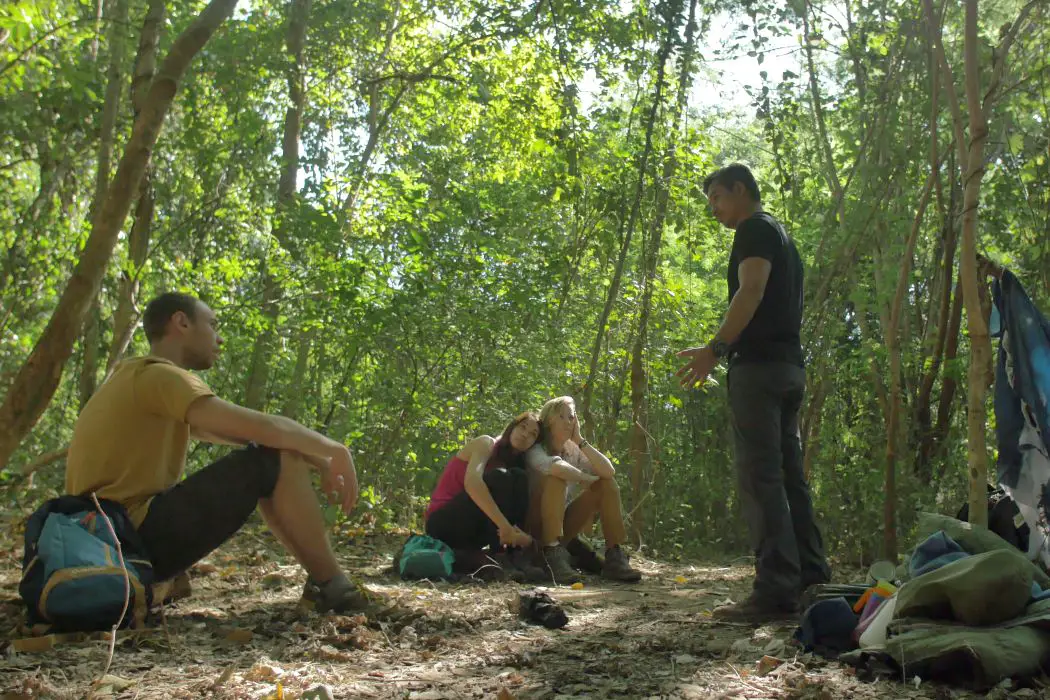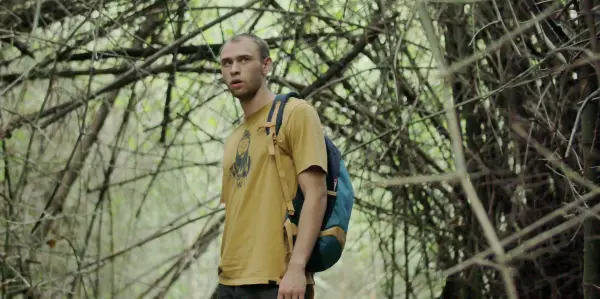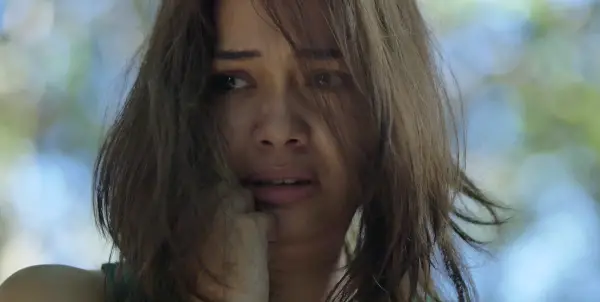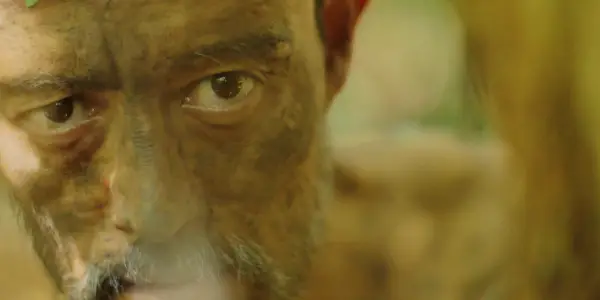The Challenges Of Shooting M.I.A. A GREATER EVIL In Thailand

All articles contributed by people outside of our team are…
As I stood sweltering in the jungle waving a polystyrene board, fanning smoke towards camera, sweat dripping from my brow, I yearned for the days when I had one hundred crew members under my charge as a production manager and first assistant director on American productions being shot in Thailand. Gone were the days when Russian arms, helicopter rigs and Alexas fitted with anamorphics were at my beck and call. But all that was ancient history now, because I’d decided to direct my first independent feature film, M.I.A. A Greater Evil (M.I.A.) in the Thai jungle.
Working on an extreme micro-budget, with a very ambitious screenplay about the last vestiges of the Vietnam War, there was no budgetary room for the comforts, equipment and manpower I had once been accustomed to calling upon. Anyone who has, or is, looking to shoot a film in Thailand can rest assured that if you come with a decent budget, you will find an extensively equipped infrastructure and talented array of professional crew in the local production services industry. If you hire the right production service company and they get you good heads of department, you’re sorted. Your film set will be as organized and as chaotic as any professional film set in the world.
Thailand’s popularity as a location destination shows no sign of slowing down. The government recently announced tax breaks and work permit exemptions for films shot in Thailand and according to the Bangkok Post, 779 commercials, feature films and music videos were shot in the Kingdom last year (including the infamous Kendall Jenner Pepsi ad).
So much for the upsides. But what happens when you don’t have the optimum budget to bring a story to life? How does a filmmaker go about getting things done in Thailand then? I was about to find out…
Favours (Lots of them)
Basically I had to use every trick in the book to maximize production value for the film, and the first trick I pulled out of the proverbial hat: the good old-fashioned favor.

Because there are so many professionals in Thailand’s film industry, all of whom have picked up some gear along the way, I had to rack my brains to see who owned something that would really elevate our film. Camera guys know that your image is only as good as your glass. So one of the first big favors we twisted arms for was to borrow a set of Zeiss prime lenses. Without pulling in massive favours, it would have been very difficult to shoot the film on the budget we had.
Shooting Days
A line producer worth his salt knows that the easiest way to save money is to cut shooting days. But we were already pressed on that. Our schedule already had us down to a meager ten days. Ten days to shoot a feature film!
Locations
The only way to pull this off was to find a location that covered all our sets. Thailand is gifted with an abundance of natural beauty, and permissions to shoot in national parks are fairly straightforward to obtain, if you work within the strict guidelines aimed at environmental conservation.

I just happened to know someone who owns Thailand’s only privately-owned nature reserve, Our Land. It had everything we needed on it or very close by: Jungle, a river, riverbanks, caves, a hill-top viewpoint. We could not have found a more ideal shooting location.
Incidentally, it is also the same area where the river scenes in The Deer Hunter were shot, even using the same river (the River Kwai) for its infamous Russian Roulette scene.
More soberingly, we knew we were shooting in the same jungle where countless Allied soldiers died building the Burma Railway for the Japanese in the Second World War. We felt this was appropriate for a film about lost soldiers and wandering spirits from the Vietnam War, and this was never far from our thoughts as we filmed – especially at night!
But we were very lucky to have all of our locations within very easy reach, especially for the night scenes, which were pretty intense.
Acting Talent
The one area where I have to admit Thailand falls short as a shooting destination, is the local English-speaking acting talent-pool. There are plenty of beautiful models and top-notch stunt people, but skilled actors are in short supply. I think we got some great performances in supporting roles from the local core of foreign actors. Other members of the cast were making their acting debuts, and they were certainly thrown in at the deep end, as we could only manage two takes on most setups.

For the lead role I needed an actress in her mid-twenties, who could really act. As with most things in life, timing is key. Wandering through Bangkok, just as we were casting for M.I.A, was talented actress Valerie Bentson from Los Angeles. Within minutes of her audition I knew we’d found the needle in a haystack, and cast her to play Anita. It was her first major role in a feature film.
We reached out to an established Vietnamese actor, Lamou Van Lam Vissay, who’d never taken an English-speaking lead before. He read the screenplay and was very keen to join us, even though we couldn’t pay much money to any of our actors. He had coincidentally been born in Laos, not too far away from the area the film is set in, along the Vietnamese-Laotian border.
Sahajak Boonthanakit, who has appeared in over 30 Hollywood films, and who is also an associate producer on M.I.A., took the role of the Guide. One of our producers took a non-speaking role as a Japanese soldier, our excellent sound man doubled as an American soldier, two of the camera crew appeared as Vietnamese soldiers and the screenwriter took the role of a dead US airman. No one signed up for just one job on our film set.
On-Set Dangers and Disturbances
Being out in the jungle in the dead of night presented some unusual problems for us. We had a huge Burmese python that needed wrangling on the set, much to the fear of our Thai crew, many of whom were petrified of snakes. We had mosquitos (always mosquitoes) and scorpions, spiders, huge biting millipedes walking through the sets. We had bats in the caves (the smell of bat droppings still hasn’t left me) and, most memorably of all, we had elephants.
Elephants suddenly appeared in the river as we filmed the gold panning scenes on the River Kwai and, more dangerously, as we filmed late at night in the jungle, we had wild elephants snorting and aggressively trumpeting nearby. Our location manager said, “Don’t worry about elephants until you hear the birds screaming. Then you know they’re coming.” Right then, the birds started screaming.
Shooting M.I.A. A Greater Evil in Thailand
My experiences while directing M.I.A. A Greater Evil apply to independent filmmakers everywhere, but also serve as an example of Thailand’s film industry being its own little melting pot where things can fortuitously come together. And every independent filmmaker knows, you need quite a bit of luck just to make it to picture wrap.
Written by M.I.A. A Greater Evil director Abishek J. Bajaj.
Does content like this matter to you?
Become a Member and support film journalism. Unlock access to all of Film Inquiry`s great articles. Join a community of like-minded readers who are passionate about cinema - get access to our private members Network, give back to independent filmmakers, and more.
All articles contributed by people outside of our team are published through our editorial staff account.












